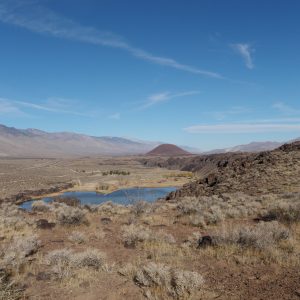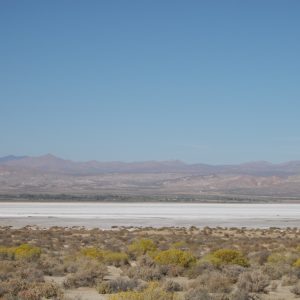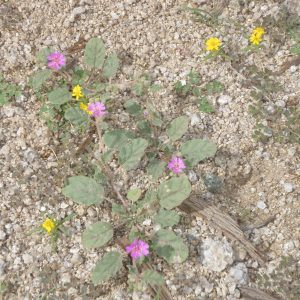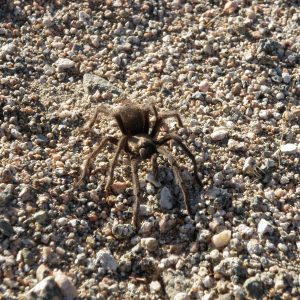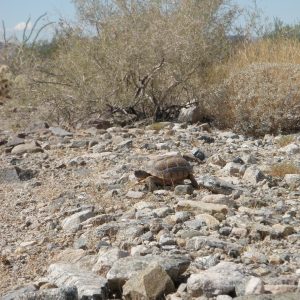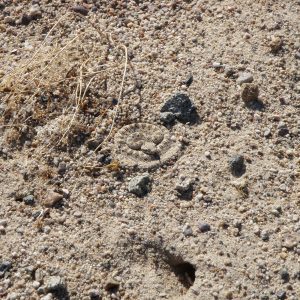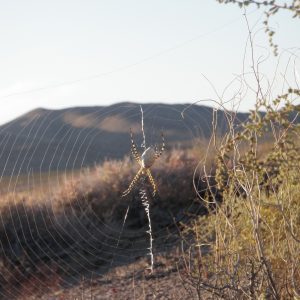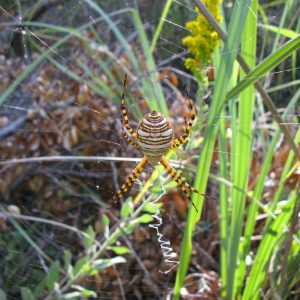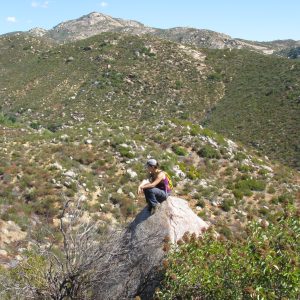
Erigonum fasciculatum at El Capitan Open Space preserve
This internship has provided a lot of new experiences and opportunities for learning. Specifically, events during the collection of Eriogonum fasciculatum seeds at El Capitan open space preserve compelled me to review some basic biological concepts regarding speciation.
The whole exercise began when Lauren (my internship colleague) and I went on a seemingly routine mission to collect Eriogonum seeds. By the time we each filled a quarter of a bucket with seeds and associated material, Lauren pointed out extensive variation in the leaf morphology of the plants we were collecting. Some plants had linear light green leaves while others had much wider, blue green, tomentose leaves. To make matters more confusing, some plants had shoots exhibiting both leaf types. This made us think there was hybridization of some sort going on so we decided to do some further research before packaging this collection in order to ensure we had taxonomically uniform specimens.
Upon consulting the natural history museum’s plant atlas, we learned that there are three varieties of Eriogonum fasciculatum in the area we were sampling. These are var. fasciculatum, var. foliolosum, and var. polifolium. According to the Jepson manual, var. polifolium has the wider, oblanceolate, tomentose leaves while var. foliolosum has the linear leaves which aren’t nearly as wooly on their upper surface. While var. faciculatum also occurs in the area, I didn’t find clear examples like I did the other varieties. Consequently, we inferred that the individuals we encountered were vars. foliolosum, polifolium, and mixes thereof.
Although we determined the collection was not useful to us because we needed seeds whose varietal lineage was free of co-mingling, this left me with some fundamental questions. How come these morphologically distinct populations are not classified as different species ? What is the difference between a species and a variety ?
Lauren Riesberg, in her extensive writings addressing speciation and hybridization, cited Mayr’s definition of a species as a “groups of interbreeding natural populations reproductively isolated from other such groups”. However, species that are not geographically isolated have been known to interbreed and produce hybrid offspring. Wikipedia defines a variety as a genetically, and in turn, morphologically distinct subset of a species that is geographically isolated from other populations within that species. However, when the geographic barrier is removed, this subset will interbreed with the rest of the species, resulting in an influx of genes which will erode the variety’s distinct features, thus reintegrating it into the greater species group. With this in mind, I distinguish species and varieties based on the fact that a hybrid of two species will produce offspring with reduced fertility, such as malformed pollen grains, while a hybrid of two subspecific varieties will produce offspring that show no such deformities and will reflect the traits of the original species. This concept reflects the methodology Michael Mesler uses in his assessment of hybridity.
In light of these considerations, I came to the conclusion that El Capitan open space preserve is a very special place in the origins and family history of Eriogonum fasciculatum . According to Flora of North America, Eriogonum fasciculatum var. folilosum came about from an ancient hybridization event between vars. fasciculatum and polifolium. This event likely happened at a place much like El Capitan open space reserve, where these populations intermingle. Eventually, isolated populations of these varieties might inbreed to the point that they become reproductively isolated from the parent varieties, giving rise to new species through divergent evolution. El Capitan offers a living snapshot into the evolutionary history that drives speciation. In conclusion, this experience reminds me that speciation is a dynamic process taking place in our backyards, in present times, while we go about our daily lives.
-Miguel K., Escondido, CA
 Transformation in the desert: sagebrush sheds its seed, as I do the last seed collections of the year in the biting dry wind of the southeast Oregon winter. No significant snow yet, perfect for my final excursions around the resource area spent searching and reflecting. Passing along all of the places I visited for the first time this field season and trying to remember how it used to be warm and even hot. It’s pretty quiet now, and most plants are pretty much hibernating. I’m sure I’ll feel like hibernating too once it starts to snow and gets below zero. But for now I’ll just coast along the empty highways with plant press handy and watch the sun reach all of the beautiful places.
Transformation in the desert: sagebrush sheds its seed, as I do the last seed collections of the year in the biting dry wind of the southeast Oregon winter. No significant snow yet, perfect for my final excursions around the resource area spent searching and reflecting. Passing along all of the places I visited for the first time this field season and trying to remember how it used to be warm and even hot. It’s pretty quiet now, and most plants are pretty much hibernating. I’m sure I’ll feel like hibernating too once it starts to snow and gets below zero. But for now I’ll just coast along the empty highways with plant press handy and watch the sun reach all of the beautiful places.




